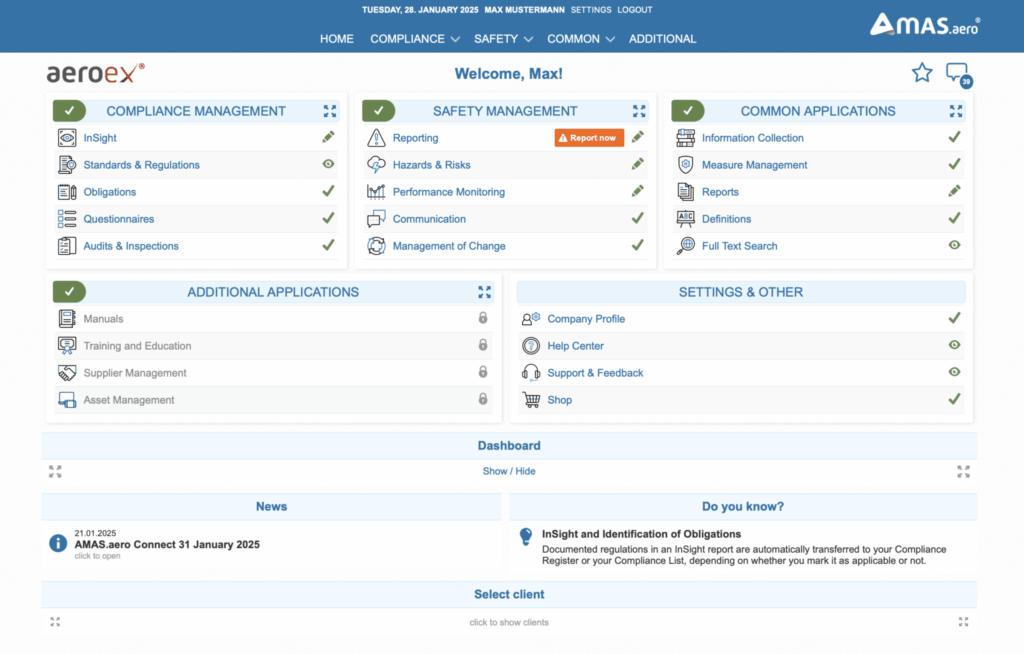Yet, across the aerospace sector, these manual processes persist, creating operational bottlenecks, increasing the risk of non-compliance, and diverting valuable time from core activities. This article explores the critical role of digital compliance tools in transforming aerospace safety and compliance management from a reactive chore into a proactive, strategic asset.
The high cost of low-tech compliance
Consider Max, a compliance manager at a specialized aerospace manufacturing firm. Max’s workweek is consumed by scanning regulatory bulletins, maintaining spreadsheets to monitor EASA updates, and manually compiling documentation ahead of audits. It’s a precarious balance between diligence and burnout—where even minor oversights can cascade into audit findings or missed obligations.
Max’s experience is emblematic of wider industry challenges:
- Slow adaptation to regulatory changes risks non-compliance.
- Siloed documentation impedes internal collaboration and transparency.
- Non-conformity tracking is inconsistent and hard to audit.
- No real-time oversight leaves leaders in the dark on risk exposure and compliance gaps.
In short: manual compliance may have worked once—but in today’s complex regulatory environment, it exposes organizations to unnecessary risk and inefficiency.
Paper-based systems may seem manageable at first, but as operations scale and regulations evolve, they quickly become liabilities. In a high-stakes environment like aerospace, this can lead to regulatory fines, reputational damage, or worse—safety incidents.
Digital compliance: Built for aerospace complexity
This is where AMAS.aero enters the picture. Developed by aviation compliance experts, AMAS.aero isn’t a generic SaaS platform—it’s a purpose-built tool designed to address the specific regulatory and operational demands of the aerospace sector.
Here’s how Max’s daily challenges are eliminated:
- Automated regulatory intelligence keeps him informed of EASA and ICAO changes—without manual searching.
- Smart audit workflows provide guided checklists, document templates, and cross-references.
- Central dashboards give real-time visibility into outstanding tasks, risk levels, and compliance status.
- Custom workflows ensure relevance for operations, from MRO providers to manufacturers.
Instead of reactive crisis management, Max now leads a proactive compliance culture—supported by a platform that evolves with the regulations.

Proven impact: What digital compliance delivers
While confidentiality limits named case studies, aggregated results from AMAS.aero users illustrate real, measurable benefits:
- Up to 40% faster audit preparation through automated documentation and scheduling.
- Improved accuracy and traceability for non-conformities and corrective actions.
- Enhanced cross-departmental coordination, reducing task duplication and oversight gaps.
These aren’t just efficiency gains—they translate to safer operations, reduced compliance risks, and stronger audit outcomes.
Key Takeaways for Aerospace Leaders
- Legacy compliance tools create hidden risks and operational drag.
- Aerospace-grade digital solutions like AMAS.aero streamline audits, inspections, and regulatory monitoring.
- Transitioning to digital tools isn’t just modernization—it’s a competitive advantage in a regulation-driven industry.
Paper-based processes are no match for the demands of modern aerospace compliance. Organizations that cling to manual systems risk falling behind—not just operationally, but in terms of safety, accountability, and strategic agility. AMAS.aero offers a smarter path forward: one where compliance management is not a burden, but a business enabler.
Curious how your team could reduce audit prep time, improve risk visibility, and future-proof your compliance workflows?




